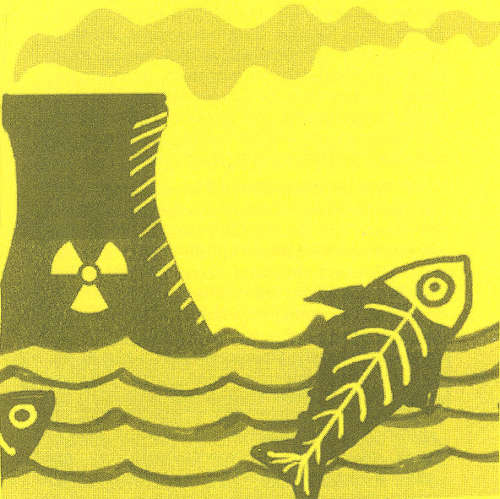| Map of the nuclear world | The uranium story |
| INES and the nuclear accidents | Radioactive low radiation?! |
| Uranium transports through Europe | The ABC deployment concept |
National ABC deployment concept - 8. -
8. Special unit rescue ABC
The Federal Agency for Technical Relief (THW), as the federal disaster control organization, is responsible for providing extensive technical assistance in the event of an incident: Rescue, clearing, electricity and water supply, bridge construction, etc. Since 2005, the THW has been setting up special emergency teams to deal with trapped people to be able to locate and recover from collapsed houses under ABC conditions. A total of 16 units of 65 men (2 leaders, 15 sub-leaders and 48 helpers) are to be built. Each Special Rescue Unit ABC (SEB-ABC) is recruited from the existing locating, rescue and clearing forces of several THW local associations.
According to the "strength and equipment verification STAN no. 02-10 "from January 1, 2006, the SEB-ABC has the following tasks:
“The SEB ABC
- explores damage situations under ABC conditions
- penetrates damaged areas by overcoming or clearing obstacles
- locates buried and trapped persons using technical / electronic tracking devices
- marks explored damage areas
- rescues buried and trapped people and provides "first aid"
- transports injured persons out of danger areas
- penetrates structural parts and carries out heavy rescue work with high-performance equipment
- Carries out technical safety work and, if necessary, puts down structural parts that are in danger of collapsing
- saves animals and harvests material assets and transports them out of danger areas
- holds corpses and carcasses
- fights special dangers in the context of rescue / recovery measures
(e.g. water, incipient fires, etc.)
- supports other NBC specialists in securing the source of danger
- illuminates damaged areas
- clears up rubble and creates access / exit routes or installation areas for the operational needs.
- builds makeshift footbridges and small bridges
- Performs work in the containment and management of drainage water
- clears damaged areas by chopping, leveling, clearing away to remove persistent disturbances
- Provides further technical assistance with the transport and handling of equipment, building materials, machines, damaged goods, overburden, etc. "(26)
The standard scenario of the SEB-ABC is the rescue of buried victims from house ruins under ABC conditions. In Hiroshima or Nagasaki, an SEB-ABC could have done great things in August 1945, but in today's Germany this scenario seems strange. Apparently, the security extremists from the Federal Ministry of the Interior are expecting major events: a worst-case scenario in an exploding nuclear power plant or a terrorist attack with a radiological bomb are still the most likely contingencies for an SEB-ABC deployment.
The equipment of the SEB-ABC includes its own detection equipment and decontamination components: CSA suits (Auer Ultra Elite or Vautex Elite ZS), Dräger YAM 7000 gas detectors, Dräger Warn-Ex-B explosion warning devices, Greatz X50ZS dose rate meter, Minicont H1370W contamination monitors, Compressed air breathing apparatus DA58 and heavy rescue equipment (e.g. wheel loader). The SEB-ABC usually stowed its equipment on equipment vehicles GKW I) and multi-purpose vehicles (MzKW-A); If necessary, she can load her material onto helicopters to be flown to the scene.
So far the following six associations exist:
1. Room Berlin (local associations Pankow, Steglitz, Zehlendorf),
2. in the Chemnitz area (local associations Annaberg, Apolda, Döbeln, Gera, Pirna, Torgau, Zwickau),
3. in the Göttingen region (Clausthal, Northeim and Ronnenberg),
4. in the Hanover area (Burgdorf, Hameln and Wunstorf)
5. in the Dortmund area (Kamen, Lünen, Schwerte, Unna),
6. the Mannheim area (Heidelberg, Neunkirchen and Sinsheim).
7. Another SEB-ABC has been under construction in Hamburg since the beginning of 2009.
The SEB-ABC units carried out several exercises within the framework of the association. On November 15, 2008, the first nationwide meeting of sixty executives took place in Nordheim.
Address: -
*
(26) Technical aid organization: strength and equipment verification Annex ABC component - special rescue unit ABC (SEB-ABC), STAN no. 02-10, Bonn, January 1, 2006, p. 3,
Online: https://www.thw-krefeld.de/component/search/?searchword=ABC&ordering=newest&searchphrase=all&limit=20
Donation appeal
- The THTR circular is published by the 'BI Environmental Protection Hamm' and is financed by donations.
- The THTR circular has meanwhile become a much-noticed information medium. However, there are ongoing costs due to the expansion of the website and the printing of additional information sheets.
- The THTR circular researches and reports in detail. In order for us to be able to do that, we depend on donations. We are happy about every donation!
Donations account:
BI Umweltschutz Hamm
Purpose: THTR circular
IBAN: DE31 4105 0095 0000 0394 79
BIC: WELADED1HAM
| Sources | Top |
***



